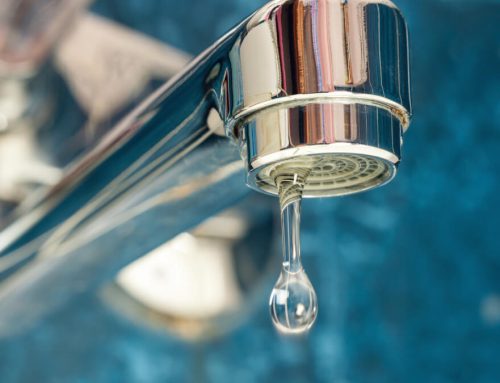
Checklist For RO Maintenance By Canyon State Plumbing Division
If you’re not devoted to routine RO maintenance, on-demand water filtration can become an over-costly investment that’s downright unhealthy. What would you say if you found out your purified water wasn’t much better than the tap? What would you do if you found out it was your fault?
Making RO Maintenance a Priority
At the end of the day, a faulty reverse osmosis process wastes a lot of water and fails to do what you bought it for. Proper care not only helps you spot deficiencies but saves you money while maintaining safe and effective drinking water. This in itself is enough reason to regularly check your system for defects and impurities.
With that said, here are some ways to do so:
1. Scheduling Pre-Filtration Methods
When your RO intake is filtered by a softening or whole home purification system, both measures need to be properly maintained. But that can be hard to do if you don’t understand how either functions. During the regeneration cycle of water softeners, soft water isn’t produced. This means hard water minerals are able to pass through.
So you’re going to want to make sure the system is scheduled to regenerate during low usage hours. In other words, RO maintenance can be difficult if the regeneration timer is not set for late at night or when no one is home.
2. Test the RO Feed Water
In order to gauge how hard your reverse osmosis unit is going to have to work to filter water, it’s a good idea to test the hardness of the water feed. You can do so by simply purchasing a water testing kit at a local hardware store. Monitor your findings to see if you need to revise RO maintenance due to changes in the water quality.
From here, you’ll want to check out the pressure of the incoming feed water. In order for the semipermeable membrane to filter water, the pressure of the feed water needs to be at least 40 pounds per square inch. If it’s below that, the RO membrane will not filter much water at all.
3. Inspect Feed Water Temperature
You may not have known this, but the temperature of incoming water impacts the way your RO unit performs. In fact, the ratings of membrane elements are based on 77 degree (fahrenheit) source water. So you can expect the product flow to be reduced by 1.5% for every degree the feed water falls under this ideal temperature.
In Phoenix, source water gets pretty hot in the summer – but drops during the winter. In turn, some residents with large systems invest in temperature blending valves. Seasonal inconsistencies are also addressed with additional membrane elements or bigger products.
4. Test Alkaline, Chlorine Levels
Another important step of RO maintenance is the comparison of feed water and RO filtered water. When a water test shows similar hardness, there’s obviously something wrong. This is why you need to test regularly. Nonetheless, you’re going to want to pay attention to the TDS (total dissolved solids) levels when making your assessment.
High levels of TDS tell you that your water consists of harmful contaminants. Drinking it can pose health risks and even cripple your cells ability to absorb water molecules. In other words, low TDS levels make it easier for your body’s cells to hydrate. If more than 80% of TDS are flowing through, then the RO membrane needs to be replaced.
5. Consistently Replace RO Pre-Filters
If you want your water quality to be above average, then standard RO maintenance needs to be taken seriously. No matter the system, changing your pre-filters at the proper time is essential. Avoiding this can result in clogs and a damaged system.
For the most part, you should be changing your sediment and carbon pre-filters every 6-12 months to prolong the life of your membrane. Just make sure you’re buying the proper filters and understand that you get what you pay for. For this reason, guidance is recommended.
6. Notate Your RO Pump Pressure
Since reverse osmosis is a pressure-driven process, the membrane elements need a specific pump pressure to produce the proper product flow and rejection. Low inlet pressure results in a slow filling tank, more reject water and less quality drinking water. Regularly notating the pump pressure helps you determine if a problem exists.
If your pressure is 50 psi or less, you can always add pressure. But some people prefer installing a booster pump to improve economic performance. Even though the reverse osmosis process can operate fine on usual local water pressure (60 psi), they perform even better when a small pump is used to boost the pressure to 80 psi or higher.
Document the Findings of RO Maintenance
While you’re at it, it’s a good idea to measure and monitor the pressure gauge readings on the tank and inlet as well. Spotting any major changes in pressure can help you avoid the consumption of poor quality water.
7. Test Wastewater and Flow Rates
The reverse osmosis process produces two types of water: purified water (or the product) and RO-reject water (wastewater). When pressure is bad or your filtration system isn’t working adequately, it will reject a lot more water than it purifies. In turn, you’re wasting a lot of water.
This is why it’s important to monitor reject levels and flow rates. Again, any changes should be investigated.
8. Replace Your Semipermeable Membrane
Your unit’s membrane can last up to 5 years when the water source isn’t too hard (or softening is present) and RO maintenance is a priority. Usage can also play a factor. Like we mentioned before, a water source with high ionic levels will wear on the membrane element a lot more than a lower ionic water supply.
So if you’re not invested in proper upkeep and analysis, you can expect the semipermeable membrane to only last a few years. So make sure you get it changed on time.
9. Routinely Clean, Disinfect the System
It may seem like a daunting task to clean out the water system you drink from, but it’s necessary. No matter how you look at it, the purification process will always leave accumulated foulants on the feed side. You can use low pH (2-4) or high pH (7.5-11) cleaners to remove deposits on the membrane that bacteria can adhere to – but it’s always best to call professional service.
While a thorough clean will most certainly aid and extend performance, it will not kill present bacterium. This is why it’s far more ideal to completely disinfect the system. Doing so on a regular basis decreases and controls microbial levels throughout.
Helping Phoenix Drink Better Water
Far too many people invest in the benefits of reverse osmosis but don’t take the time to understand system functionality. Unfortunately, they just assume the filter will produce high quality water without much effort on their end. This couldn’t be further from the truth. At the same time, it’s not exactly their fault.
Businesses that sell these systems have a moral obligation to explain how worthless they can become when RO maintenance isn’t considered. Even though it’s possible to manage a majority of this checklist on your own, it’s always a good idea to seek the help of a professional.
At the end of the day, we hope this blog series has given you the tools to ensure your drinking water is not only tasty – but safe. If you’re considering an installation, or happen to have any questions, a certified plumber is only a phone call away.

